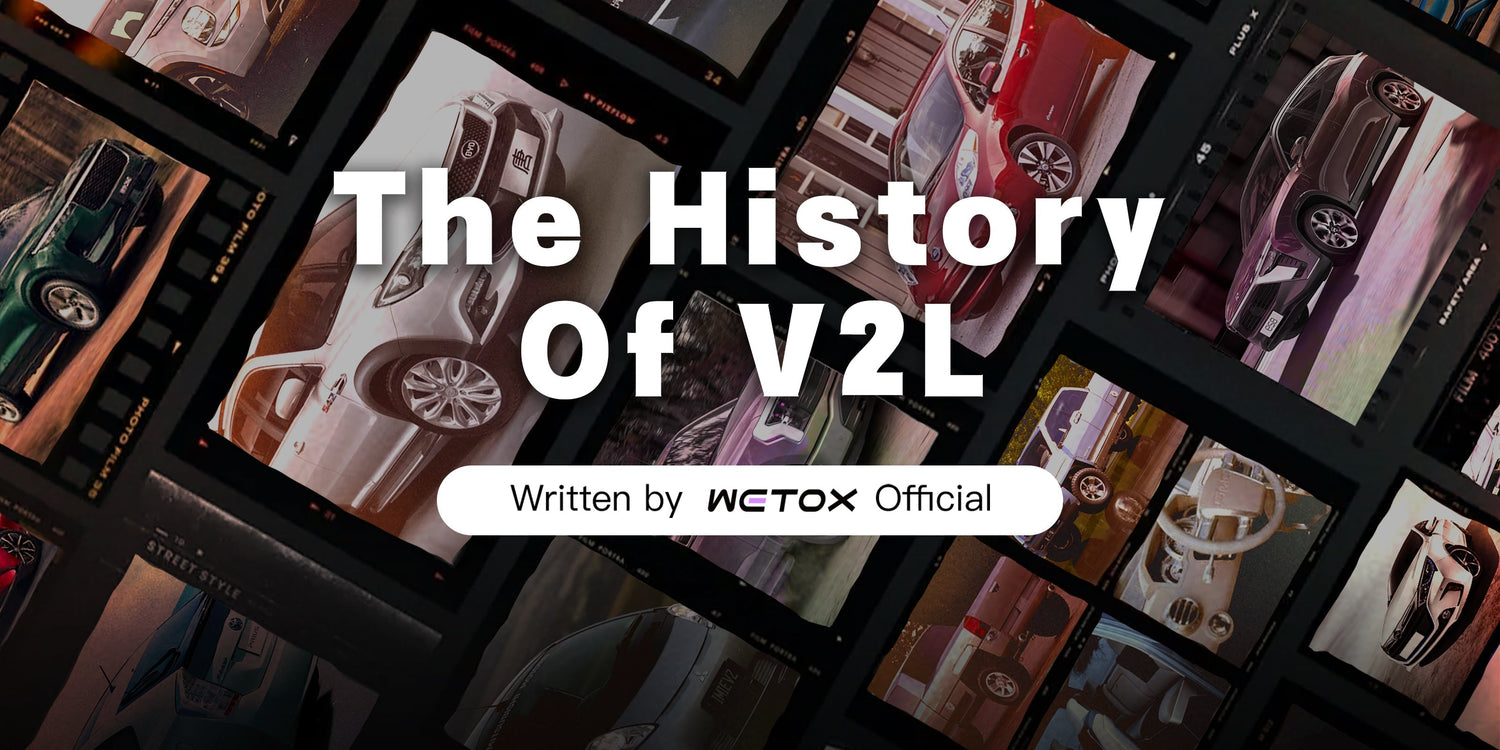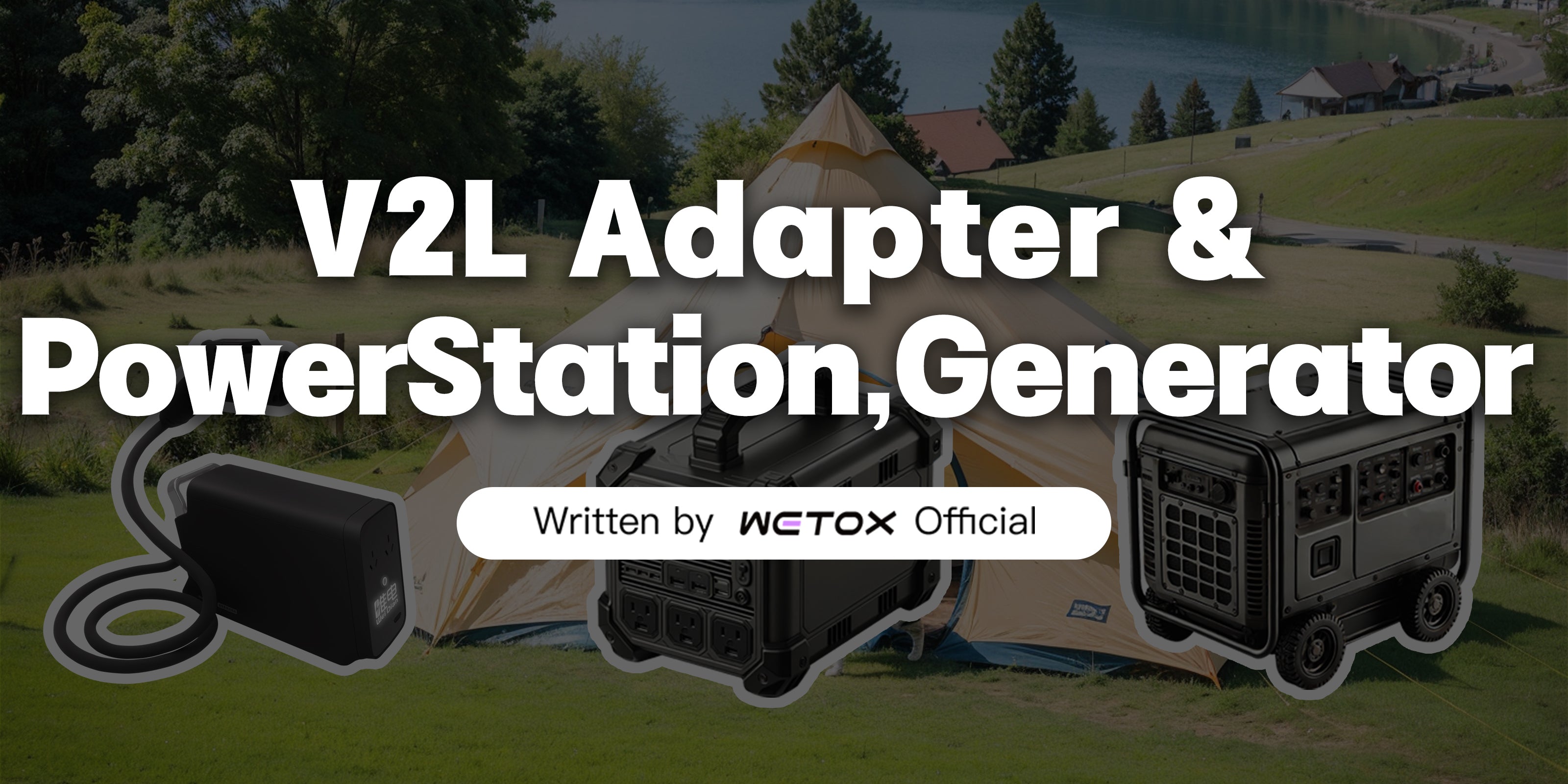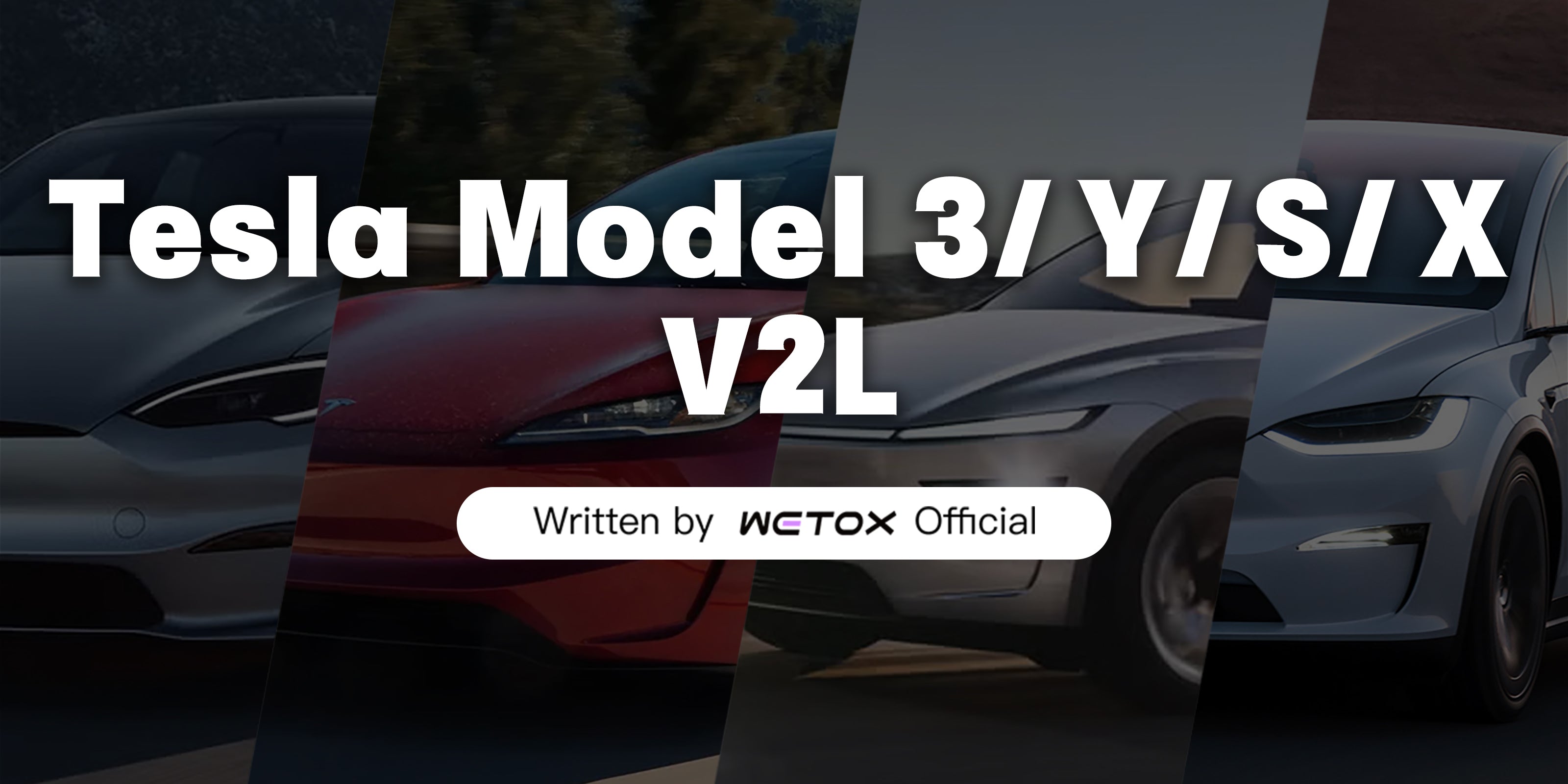Several articles on the WETOX website have already covered what V2L is, how it works, and its practical applications. In this article, we’ll take readers through the history of vehicle-to-load (V2L) technology.
When it comes to V2L, the first thing that comes to mind is V2L from EVs—and for good reason. With batteries offering tens or even hundreds of kilowatt-hours, EVs are undoubtedly the optimal solution. However, as electricity is the lifeblood of modern civilization, humanity’s exploration of power sources has never ceased. Even for gasoline-powered cars, which inherently lack the same advantages, engineers have spent the past few decades continuously searching for viable solutions.

The concept of using a vehicle as a mobile power source was first introduced by the GMC Terradyne concept car, which debuted at the 2000 North American International Auto Show (NAIAS). It featured a built-in generator capable of providing 5kW of power output. In 2004, the 42V mild-hybrid Chevrolet Silverado hit the market, where its electric motor was not only used to start the engine but also to charge three 14V lead-acid batteries.
More recently, the gasoline-powered Ford F-150 comes equipped with the Pro Power Onboard system, which uses the engine to drive a built-in generator, supporting multiple output power levels.
However, it’s clear that V2L in gasoline vehicles is severely limited by their small battery capacities, allowing only short bursts of electricity supply. Additionally, high fuel consumption and emissions make them less practical for widespread adoption outside of work-oriented vehicles like pickup trucks.




Japan, known for its strong disaster preparedness mindset, was also an early adopter of the V2X concept. In 2010, Nissan introduced its “Leaf to Home” technology, making the Nissan Leaf—which uses the CHAdeMO standard—the world’s first EV to support bi-directional charging. Nissan also released a dedicated inverter and home energy management system, with pilot programs for V2G (vehicle-to-grid) already underway in some regions.
In 2012, Mitsubishi Motors, also using the CHAdeMO standard, launched the MiEV Power Box, an inverter compatible with its i-MiEV EV. This marked the debut of the world’s first DC V2L adapter, although its maximum output was limited to just 1.5kW.
Unfortunately, as we’ve seen, Japanese automakers did not pursue aggressive EV transitions over the following decade. Despite pioneering V2X concepts, they failed to push this forward-thinking technology onto the global stage. Even today, hybrid models like the Prius and AQUA remain constrained by their small battery capacities, limiting their V2L output to 1.5kW and rendering applications like V2H and V2G unattainable.

It was Chinese automakers that truly brought V2L technology into the mainstream. In 2015, BYD launched the Qin and Tang models, which were the world’s first vehicles to support V2L through their AC charging ports.
Although the Toyota Prius PHEV introduced bi-directional OBC-based V2L technology as early as 2011, it may have been limited by its focus on disaster preparedness scenarios. The power outlets were placed inside the car, either in the rear seats or trunk, with a maximum output of just 1.5kW. It wasn’t until the 2023 Prius PHEV that Toyota added support for discharging via a V2L adapter through the vehicle’s charging port.
In contrast, the BYD Tang featured 3.3kW output and supported discharging via the vehicle’s charging port, enabling more versatile applications. Its ability to supply power outside the vehicle also made it inherently suitable for outdoor activities.
Over the following years, China experienced a camping boom, and V2L technology quickly became a key selling point for nearly every automaker launching new models. Today, in China, it’s increasingly difficult to find a new car that doesn’t come equipped with V2L functionality.

NIO made a bold and innovative move to promote its battery-swapping technology by removing the OBC configuration from all its models. As a result, these vehicles can only support DC fast charging and do not allow AC slow charging—nor can they achieve AC discharging. While this approach represents a forward-thinking innovation, it has also sparked considerable debate.
To address user needs, NIO officially introduced a bidirectional charging and discharging unit. By switching and reconfiguring connectors, it supports 2.8kW charging and 3.5kW discharging. The system similarly operates through the vehicle’s DC charging port for both charging and discharging, with inversion or rectification handled by the external adapter.
So, over the past two decades, numerous countries and automakers around the world have made their own choices when it comes to V2L implementation. Yet, why has Tesla, whose slogan is "Accelerating the world's transition to sustainable energy," remained silent for so long?
As an Independent brand, WETOX cannot provide a definitive answer. One earlier theory suggested that V2L might conflict with Tesla's Powerwall product. However, with the release of the Cybertruck, which comes equipped with V2L capabilities, this speculation now seems less convincing.

Based on Elon Musk’s First Principles approach, we believe that cost is the primary reason why the Tesla Model 3, Model Y, Model S, and Model X do not support V2L.
A bi-directional OBC is significantly more expensive than a unidirectional OBC in terms of BOM costs. Moreover, as the OBC is already one of the more failure-prone components, even when used solely for charging, it generates substantial after-sales service costs. Allowing over a million owners to use it for discharging would only lead to even higher expenses for the company.
At Tesla’s 2023 Investor Day, in response to a question about V2L, Elon Musk stated, “I don’t think very many people are going to want to use bidirectional charging, unless you have a Powerwall, because if you unplug your car, your house goes dark, and this is extremely inconvenient.”At the same event, Drew Baglino, who was then Tesla’s Senior Vice President of Powertrain and Energy Engineering, also explained, “The lack of bidirectional charging was not really a conscious decision, but rather not a priority at the time. The company is working on reducing costs while adding functionality, aiming to offer more for less.”

WETOX fully agrees with Tesla’s philosophy. However, while not every owner may need this feature, among the over 6 million Tesla owners worldwide, there are certainly specific users who have a demand for V2L. Our mission is to provide the highest-quality DC V2L adapters for those users.
The WETOX PowerShare D2 is built in compliance with J3400, NACS, and ISO-15118 standards, enabling Tesla vehicles to achieve V2L without any modifications. Users who require this feature can purchase it separately, rather than spreading the cost across all owners. This approach offers a fairer solution for everyone.




Leave a comment
This site is protected by hCaptcha and the hCaptcha Privacy Policy and Terms of Service apply.